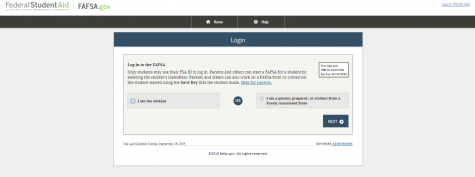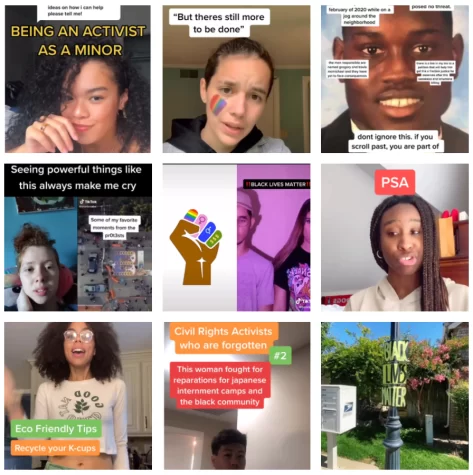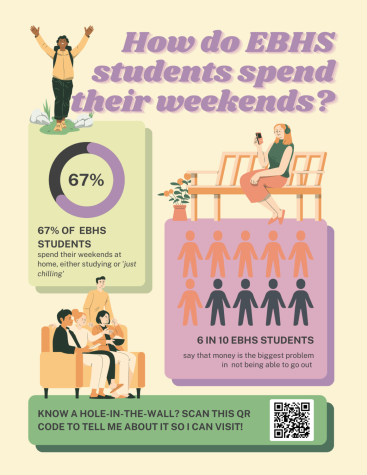Free Article for Federal Student Assistance on the FAFSA
Writing college essays, defining your very essence in six hundred fifty words, is hard enough. Getting past the jargon -the SAT, pSAT, GPA, ED, EA, SCEA, FURPA, FAFSA- actually figuring out what to do in order to fill out the necessary forms is simply cruel. It’s like colleges expect you to hit a bullseye in pitch blackness. Lucky for you, I have put the fish in a barrel. With the help of this guide filling out the FAFSA should take around an hour. Sit down with your parents, get comfortable, and let’s finish the The Free Application for Federal Student Aid.
October 11, 2019
The FAFSA, or the The Free Application for Federal Student Aid, is an important form for determining how much you will have to pony up for college. FAFSA will give lower income students federal aid, such as Pell Grants, so they may afford college. Colleges use the FAFSA to determine how much need based aid to allot you; some colleges use the FAFSA to determine how much the sticker price of the college will be. Let’s get started.

Step 1: Create Your Account and Gather information
Information needed: Social Security Number(SSN)
Go to https://fsaid.ed.gov/npas/index.htm. Here you will create your FAFSA account. If you are a dependent student, most reading this are, you will have to create an account for yourself and one for your parent(s). If you are unsure, see the FAQ. You must not share your account with anyone, including your parent(s). They will create their own accounts and electronically sign your form.
Enter your information in the prompts provided. Make sure to enter your own phone number. Remember that the FAFSA account you are making is only for you. You should also use your personal email, not your school email. When you graduate, your school email account will be closed. You will need to access your FAFSA account after you graduate since you need to fill one out for every school year for federal aid. When choosing Challenge Questions, make sure you choose questions you always will know the answer to. If you forget your passwords, these are key to recovering your account.
In order to fill out the rest of the FAFSA you will need various documents and information.
You will need:
your parent(s) and your SSN,
Driver’s License Number(optional),
highest education parent’s received,
federal school codes(from schools you’re thinking about applying to),
Parent(s) residency status,
and Parent(s) 1040 and W-2.

Step 2: Logging In
Go to https://fafsa.ed.gov/spa/fafsa/#/LOGIN?locale=en_US. Here you will log into your FAFSA account. Select the “I am the student” option on the left. The other option is for parent(s) or people living in Freely Associated State. Most Bear Hub readers live in New Jersey, but if you are unsure if the other option applies to you, see the FAQ. Then login with the username and password made in the previous step.
The next question is, “For which school year are you applying for financial aid?” For most people, the answer will be “Start the 2020-2021 FAFSA”. This means you will be attending college during the 2020-2021 school year. The other option is for those going to college during the 2019-2020 school year which does not apply to any high school senior.
The next step is to create a temporary Save Key to complete this specific FAFSA. This allows your parent(s) to fill out parts of your FAFSA or sign your FAFSA without giving your FAFSA ID away. Choose a temporary Save Key. You are now able to fill out the FAFSA.
Note: According to the FAFSA website, the form should take less than an hour to finish. However, this is assuming you have all the required information on hand. It is perfectly fine to fill out the FAFSA across multiple sessions. You can save your application for up to 45 days.
Step 3: Student Demographics
Information needed: SSN, Driver’s License Number(optional), highest education parent’s received
Most of the boxes will be pre-filled from the information you put in earlier when you made your account. Make sure your name is exactly how it appears on your Social Security Card.
When answering the question about your sex, questions about the Selective Service System will appear. The Selective Service System is an independent agency of the federal government that maintains information about those subject to military conscription. Most male US citizens, between the ages of 18 to 25, are required to register so it is recommended that you select to be registered with the Selective Service System. If you are unsure if this law applies to you, see the FAQ.
Part 4: School Selection
Information needed: Federal school codes
It is fine if you do not have a finalized list of colleges for this part of the FAFSA. Simply put any and all schools you are considering applying to. If you decide to apply to a school after you fill out the FAFSA, simply log back into your account and add the school. The FAFSA only allows for 10 schools to be added. If you are applying to more than 10 schools, just log in after you have completed the FAFSA and add the other schools.
If you cannot find the school you are trying to send the FAFSA to, look up the Federal School Code of that specific college and add it to the FAFSA using that code.
For New Jersey, the order of the schools listed does not matter. As long as there is an eligible in-state college, you will be considered for state aid grants.
Part 5: Dependency Status
See the FAQ to determine if you are a dependent student. Note that IRS dependency is NOT the same as FAFSA dependency. Most readers will be considered dependent students.
Part 6: Parent’s Information
Information needed: parent(s) SSN, date of birth, email address, and residency
Determining who is considered a parent for the FAFSA can be tricky. Above is a chart from the Office of the US Department of Education to help you figure out who is your parent for the FAFSA.
To determine your household size use the following guidelines. Each counts as one person, your FAFSA parent(s), you, FAFSA parent(s)’ other children*, other people in your household.
To find the “Number in College”, follow the criteria below. Start by counting yourself then add anyone who is or will be enrolled in college. If you have a twin or a sibling entering college at the same time as you are, count them as well. Do not include your parent(s), even if they are or will be enrolled in college, or anyone at a US service academy.
*only count children that are independent students
Part 7: Student and Parent Financial Information
Information needed: parent(s), W-2 and 1040 tax forms
This is the most daunting part of the FAFSA, however; it is now easier than ever. The IRS and the US Department of Education now have a partnership. The FAFSA can now be linked to the IRS Data Retrieval Tool(DRT). There are two reasons you may not be able to use this powerful tool: if your parent(s) have not filed their taxes for the previous year, or if you filed a Puerto Rican or foreign tax return. Once you set up the DRT, the answer to most questions should be filled in with “Transferred from the IRS”. The few boxes left can be easily filled out using your parent(s) W-2 and 1040 tax forms. Make sure your parent(s) are with you when you are filling out the article to make sure all the details are correct.
Part 8: Sign and Send
You’re almost there. There are two ways you can submit your signature, either electronically or print a signature page to then mail it. If you are a dependent student, you will also need your parent(s) to sign your FAFSA form.
After signing, you will receive a confirmation page. This will show you the estimated Federal Pell Grant and Federal Stafford Loan eligibility. If you go back to change information on your FAFSA, this page will change. Once you have finished making all changes, print out a copy of the confirmation page. You will then be sent a copy of your Student Aid Report(SAR). Print and keep a copy of this as well.
Now you’re done. Let out that deep breath you’ve been holding in, stretch your legs, and relax. There is still the looming cloud of everything else you have to do but forget about that for some time. You did something today. Relish in this and all your small victories. Doing something is the hardest task any of us can do, and if you can fill out the FAFSA then you can sure as heck finish your Common Application. Good luck.
Frequently Asked Questions:
How do I know if I am a dependent student?
If you are considered a dependent student, then you will have to make a student and parent account. If you do not meet any of these criteria below, you are considered a dependent student.
24 years of age or older
Married
A graduate or professional student
A veteran or active duty member of the armed forces
An orphan or ward of the court
Someone with legal dependents, other than a spouse
An emancipated minor
Someone who is homeless or at risk of becoming homeless
Most people in EBHS will be filing the forms as a dependent student. This means your parent(s) and you have to fill out the FASFA. Your accounts must stay separate and you cannot share your FASFA account with anyone.
Am I a student of a Freely Associated State?
A Freely Associated State (FAS) is an independent nation that has signed a comprehensive agreement with the United States called a Compact of Free Association (COFA). This agreement governs diplomatic, economic, and military relations with the United States. The three FAS are the Republic the Marshall Islands, Palau and the Federated States of Micronesia. If you are living in these countries, select “I am a… student from a Freely Associated State”.
Am I required to register with the Selective Service System?
You are considered exempt from the Selective Service System if you meet one of the criteria, listed below.
Individuals who are born female and have changed their gender to male
Incarcerated, or hospitalized, or institutionalized for medical reasons
Continually confined to a residence, hospital, or institution
Lawful non-immigrants on current non-immigrant visas. A complete list of acceptable documentation for exemption may be found at https://www.sss.gov/Portals/0/PDFs/DocumentationList.pdf
Members of the Armed Forces on active duty (active duty for training does not constitute “active duty” for registration purposes)
Cadets and Midshipmen at Service Academies or Coast Guard Academy
Students in Officer Procurement Programs at the Citadel, North Georgia College and State University, Norwich University, Virginia Military Institute, Texas A&M University, Virginia Polytechnic Institute, and State University
Seasonal agricultural workers (H-2A Visa)












